
BOOT & FUN Berlin 2024 – We are exhibiting!
Hamburg, 17.11.2024 – After successfully participating in surf festivals in the north of Germany (Fehmarn) and a trade fair in the south,
Photography is a wonderful way to capture special moments forever. Various photographers focus on landscapes, portraits or animals, for example. Others crave more action and specialize in surf photography or water photography. We have compiled the most important information on the topic of surf photos for you – including techniques, equipment, as well as numerous tips and tricks for beginners.
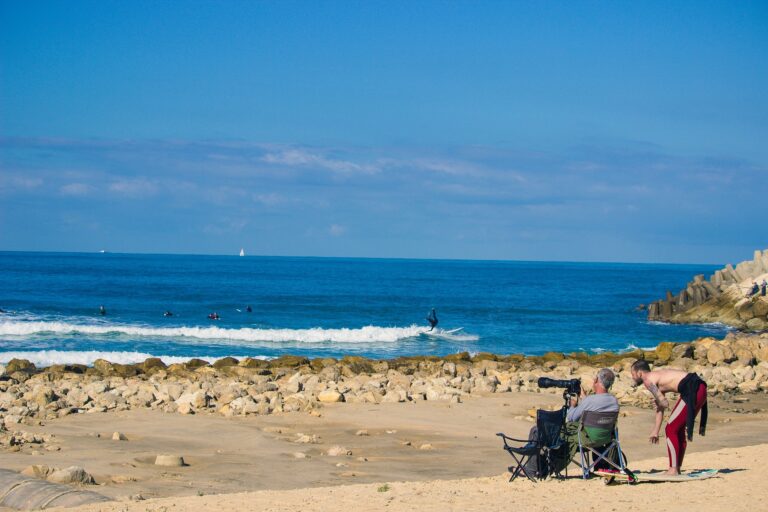
That’s already enough reason! To photograph surfers during exciting tricks is simply fun. Your creativity is required here – you can experiment with light, shadows, and different angles, all while being in your preferred environment: Nature. Surf photography means being either at the beach or in the sea – the sound of the ocean and sunshine always by your side.
As an amateur photographer, you have the opportunity to create unique memories with your photos. Bring joy to your friends with amazing surf pictures and share the stoke. The locals also appreciate new surf pictures!
With some practice, you can create high-quality surf images and even sell them. The photos can also be used for analysis purposes in surf lessons or by surf coaches. At WSL surf competitions, professional photographers are also needed. Photography of breaking waves and the sea, especially during the “Golden Hour,” is also very popular.
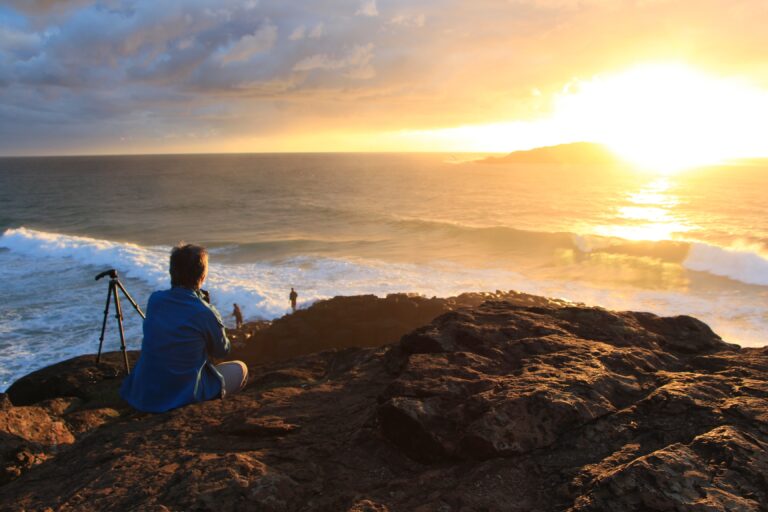
We’ll first introduce you to the most common perspectives in surf photography before moving on to explain the most frequently used cameras in the next section. The perspectives give you some clues and ideas, but in general: Nothing beats trying it out! Practice different angles and gradually find your flow.
Most people initially try it from the beach. There are various angles and differences in height to practice new perspectives. You can stand directly at the shore to be as close to the action as possible. Alternatively, breathtaking images also emerge from a dune or cliff coast, giving you a sense of elevation. Tip: The surfer and the depth of the wave are best observed at an oblique angle – this is especially important for “tubes”!
You can’t get any closer! With special mounts for waterproof action cameras, you can film your waves from the board. Alternatively, there are also mouthpieces with which you can hold the camera. Advanced surfers simply hold the action camera in their hand. The result is unique recordings with a goosebump factor!
With an underwater housing for your camera, you can capture top-notch surf photos up close. While prior knowledge about the sea and your creativity are required, the end result is unique photos and memories. Most photographers in the water position themselves near breaking waves to capture maneuvers effectively while avoiding being engulfed by the wave.
Drone footage is becoming increasingly popular in surf photography! Whether done as a hobby or on a professional level, creating perspectives from the air generates unforgettable memories and serves as a great tool for analytical purposes.
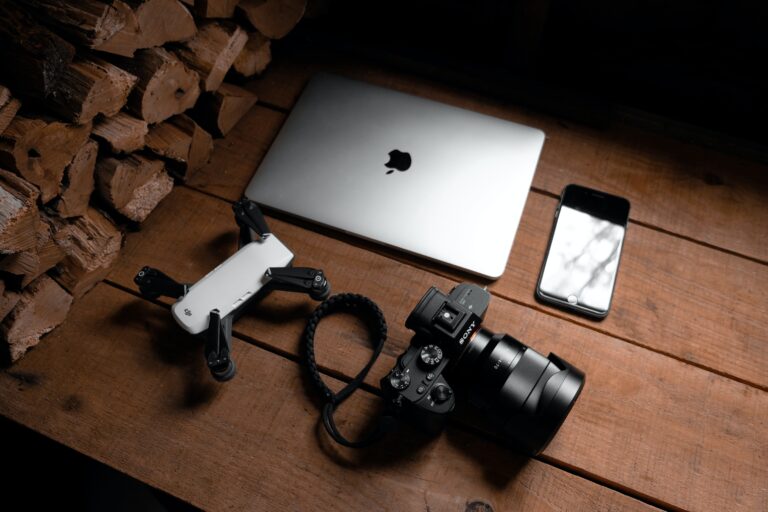
Modern smartphones often have well-developed cameras that can capture high-quality photos. Along with a tripod for mobile phones, you can take great photos from the beach for your friends. For experimentation, smartphones are a great option, but for professional shots, digital single-lens reflex (DSLR) cameras should be used instead.
Single-lens reflex cameras are probably the most common choice when it comes to surfing. As the name suggests, here the light passing through the lens is projected onto a light-sensitive sensor through the mirror. This allows the photographer to be sure that the photo looks exactly as it does in the viewfinder – this is particularly advantageous in action photography. The high image quality also ensures razor-sharp images. As most waves break at a certain distance from the shore, you need a lens with a zoom function to bridge the distance.
A bridge camera, combines the best of two worlds – it is a hybrid of a DSLR and a compact camera. Bridge cameras have adopted some of the control capabilities of DSLRs. The fixed lens and the sensor of the compact camera have been integrated into the bridge cameras. The advantages are, on the one hand, the large zoom range of the lens, and on the other hand, that you don’t have to carry any additional lenses with you. They are perfect for taking photos from the dunes, for example.
Compact cameras are ideal for vacation photos or shots taken on the go, thanks to their compact and lightweight design. Although great memories are created here, a compact camera is not the best choice for high-quality photos.
For various extreme sports, photo shots with action cameras are becoming increasingly popular – naturally, this also applies to surfers. The cameras consist of a lens, a battery and usually a waterproof housing. With small and compact cameras like from GoPro, for example, you get the feeling of riding the wave along with the surfer!” Meanwhile, there are even 4K cameras available, which provide incredible possibilities for your photos.
A drone looks like a mini helicopter with a small camera attached to it. With the controller, you determine the flight path as well as the angle to capture breathtaking photos from the air Also find out about a drone license and where you are allowed to fly.
For indescribable shots from the water, there are waterproof camera housings that you can use, for example, for your DSLR or action camera. This allows you to capture action shots of the surfer without putting your camera at risk. Some housings even remain watertight at considerable depths, allowing you to unleash your creativity in underwater photography.
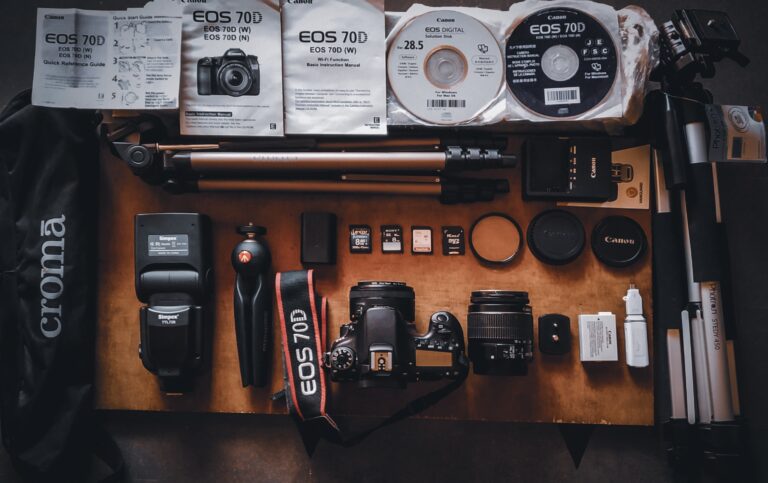
A tripod is a mount to which you can attach your camera. A tripod is a must, especially for a sequence of surf photos, as you select a fixed image section beforehand and avoid blurred photos. Tripods are also worthwhile for heavy zoom lenses.
If you want to take photos from the water, you will need a waterproof case for your camera. The housing protects your camera from water and enables great close-ups and underwater photos of the surfers. Go Dome or Liquid Eye are renowned brands for waterproof camera housings.
There are numerous mounts to attach your action camera to the surfboard. Choose between a chest strap, a head strap, a “handler” for the hand and a wrist strap with Velcro fastener. Alternatively, there are also self-adhesive mounts for your board that can be used to attach the camera securely without damaging your surfboard.
With a telephoto lens, you can zoom in on distant subjects and capture them in high quality. Telephoto lenses are characterized by a long focal length, which is measured in mm. This option means 70mm and upwards – so you can take sharp photos of distant surfers from the beach.
Surf photography means carrying a lot of equipment! Fortunately, there is a vast selection of bags and backpacks that provide suitable compartments for your camera, lenses, memory cards, batteries, and other accessories. There are also waterproof options available in case it rains intermittently.
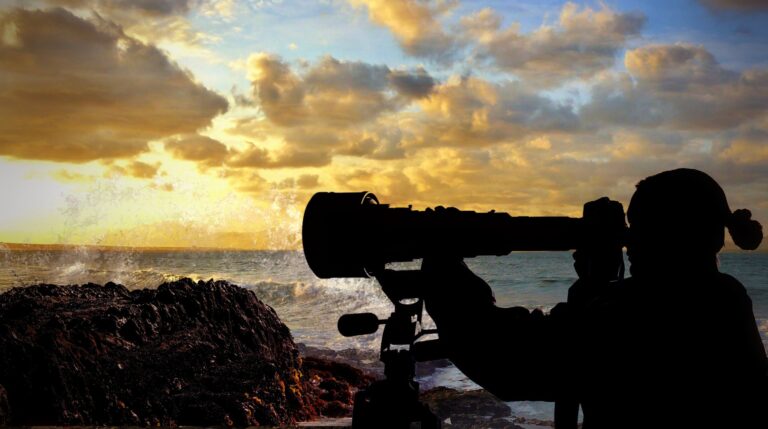
For successful water photography, you need not only good surfing conditions but also favorable weather conditions. Ideally, this means lots of sunshine with blue skies, otherwise no rain and little wind and, of course, no fog so that you have the clearest possible view.
Mother Nature never fails to take our breath away – especially during sunrise and sunset! Even after storms, sometimes surreal lighting conditions arise when the wall of clouds breaks open and the sea is bathed in deep pink hues. If there’s also a rainbow, your photos will become even more magical.
There are a few rules to follow when taking photos. One of the most important things is to avoid direct sunlight from the front, so that your photos do not become overexposed. The light should always come from behind or from the side. Especially around noon, when the sun is high in the sky, this tip is worth gold value!
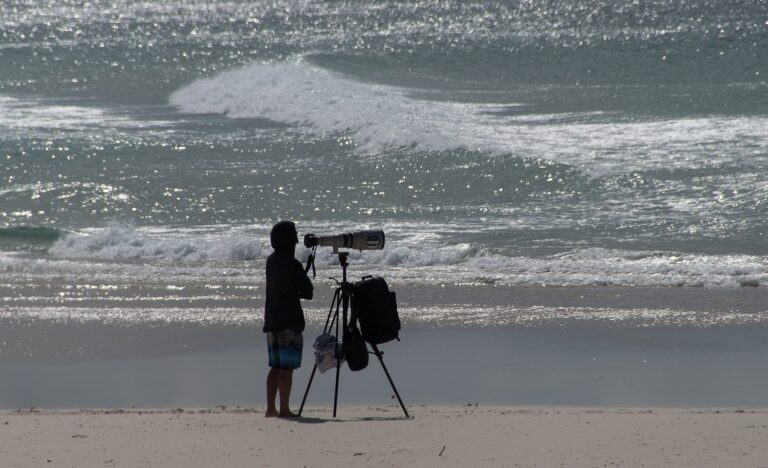
When taking photographs, especially in the surfing area, there are numerous techniques to consider. For beginners, the many settings can quickly seem overwhelming. We have summarized the most important tips for you:
1.Before you start, select the “Series” setting. Once the surfer initiates a maneuver or trick, you can capture numerous photos in a very short time. This way you have captured the entire execution and can choose the best image later.
2. Whether on land or in the water: Discuss your photography plans in advance with the surfers, including the conditions and what the surfers are capable of.
3. Patience is half the battle! The perfect surf photo will not be shot within ten minutes. Take your time, prepare well and don’t give up.
4. As a water photographer, you should be flexible and ready for action! The wind and the tides are constantly changing and wait for no one.
5. Download apps such as “Windy” for wind, weather and swell forecasts. This way you can plan, know when the waves are coming, and even chase storms to be able to take numerous photos in different locations.
6. Think about what you want to achieve with your photo beforehand. Nature and emotion? Close-up of the surfer? In general, you want to create excitement with your surf photography and press the shutter button when you want to capture a special moment of surfing.
For surf photography, the “autofocus” setting makes your life much easier! This way you can ensure that the surfer remains permanently in focus while paying attention to the right moment. There are also automatic programs for all settings, which are suitable for experimentation. To improve your skills, you should also familiarize yourself with the manual settings:
In addition to the camera settings, these three values are probably the most important! We recommend experimenting with the settings in different lighting conditions. In this way, you can slowly develop a feeling for how your settings affect the photos. In general:
1. Exposure time: The exposure time indicates how long the light hits the sensor. For action-packed surfing shots, you only need a short exposure time, otherwise, the photo may become blurred.
2. Aperture: The aperture determines the opening of the lens, which in turn manipulates the amount of light entering the lens (f-value). This setting changes the exposure and the depth of field, i.e. how much the foreground and background stand out from each other. Fortunately, there is the “automatic aperture” setting, allowing you to still adjust exposure time and ISO individually.
3. ISO: The ISO value also relates to light, but it is associated with the light sensitivity of the sensor. The higher the value, the more the light is amplified by the sensor. At the same time, a too high value also results in noise in the photo, which is why low ISO settings generally mean better quality. This setting is particularly practical for sunrises and sunsets when the lighting conditions are rather dark.
Post-processing often makes a huge difference! This allows you to crop the images according to the two-thirds rule, align the horizon, and influence aspects such as light, contrast, and much more to highlight the surfing action.
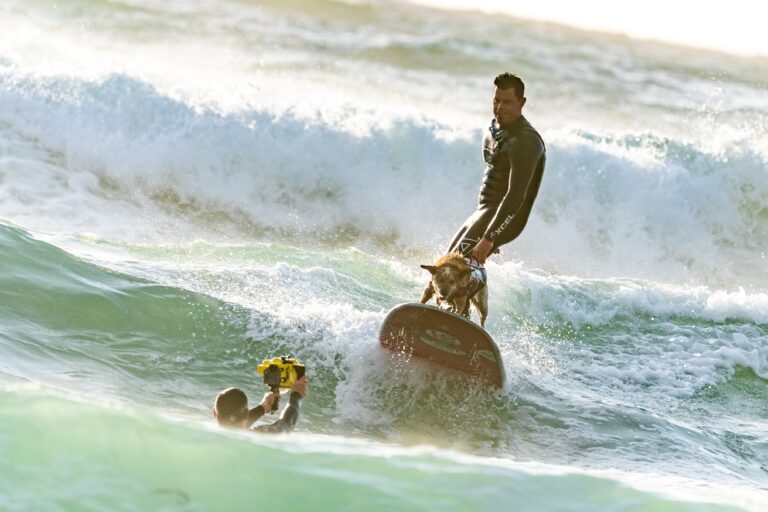
There are numerous photographers who have made a name for themselves in the sport of surfing. One of them is Chris Burkard – one of the most successful outdoor photographers with a great love for Iceland. Australian Russell Ord is also considered a true legend in surf photography. Of course, there are also many talented women: Sarah Lee grew up close to the ocean in Hawaii and now lives exclusively from photographing surfers.
French surf photographer Alex Laurel has been working for Surf Europe Mag and Nike 6.0 for a long time – he not only photographs warm water waves but also icy and remote locations with snow-covered mountains in the background. Ben Thouhard, on the other hand, photographs the monster wave Teahupo’o in Thahiti and all those who dare to surf it. Alvaro Igliki is a famous surf photographer in Andalusia – his tip for beginners: Believe in yourself and work hard! Professional photographer Morgen Maasen also advises you to practise properly on land before going into the water. The motto there is: Vigilance and patience – know the dangers of the sea!
In Waimea Bay on Hawaii, there are monster waves that break directly onto the shore – the famous “shorebreaks” of Oahu. For surfer Clark Little, the waves are not only fascinating to watch, but also to photograph – not from the shore, but directly in the wave! The result is surreal photos that cannot be taken anywhere else. Clark Little has years of experience as a surfer and photographer – you should never go into shorebreaks without prior knowledge!
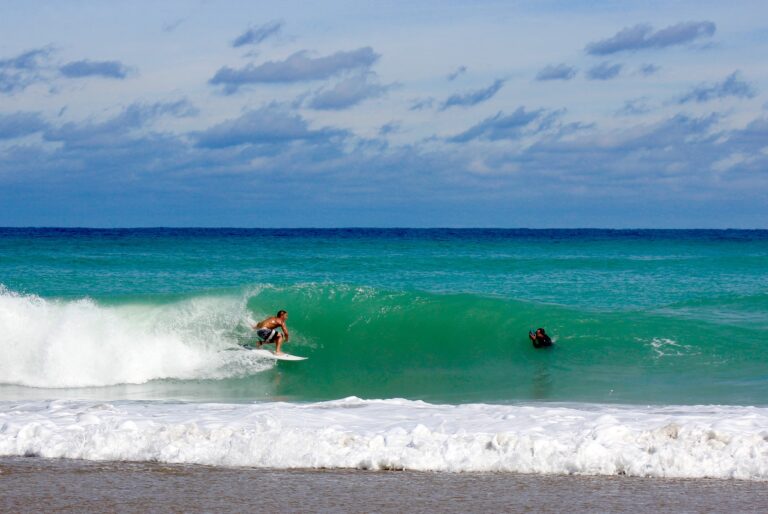
1. Good and affordable equipment for getting started in surf photography
There is camera equipment for beginners, allowing one to gradually work their way up to a higher level. Tip: Many photographers sell good quality used cameras, which is easy on your wallet.
2. Cameras with WLAN function
Some DSLR or bridge cameras come with a Wi-Fi function, allowing you to edit photos directly on your smartphone without losing quality.
3. Protection of the camera equipment
When buying your camera, make sure that it is splash-proof. Also avoid changing lenses on the beach. In areas with high humidity, small silica gel packets for your backpack are worthwhile.
4. Care of the camera equipment
Especially on the beach and by the sea, care should be taken to ensure that the camera is protected from salt and sand, so that it does not lose its value and remains functional for a long time. You can clean the housing yourself regularly, but we also recommend professional cleaning.
5. Insurance for camera equipment
Cameras and the associated equipment are not cheap affair! It is worth investing in insurance to avoid high costs in the event of theft, breakage and loss.
6. Photography courses & workshops
A course or workshop in surf photography not only is incredibly fun, but you also gain valuable knowledge in a short period of time.
7. Connect with like-minded people
Whether in the workshop, on the beach or in the water: Exchange ideas with other photographers about your work. Discover valuable tricks this way!
8.Use different resources
Try to gain as much knowledge as possible. This means studying books, videos, photos and tips from other photographers, and implementing the instructions and ideas.
9. Get to know your camera
Try out different settings and play around with all the buttons so that you get to know your camera as quickly as possible. This also prevents you from selecting the wrong setting at a critical moment.
10. Practice makes perfect
You can read as many books and look at photos as you like, but the more you practise and try things out yourself, the better you will become. Stay patient – it will be worth it!
Have fun with your surf photography!
Wishes your Stoked Zone
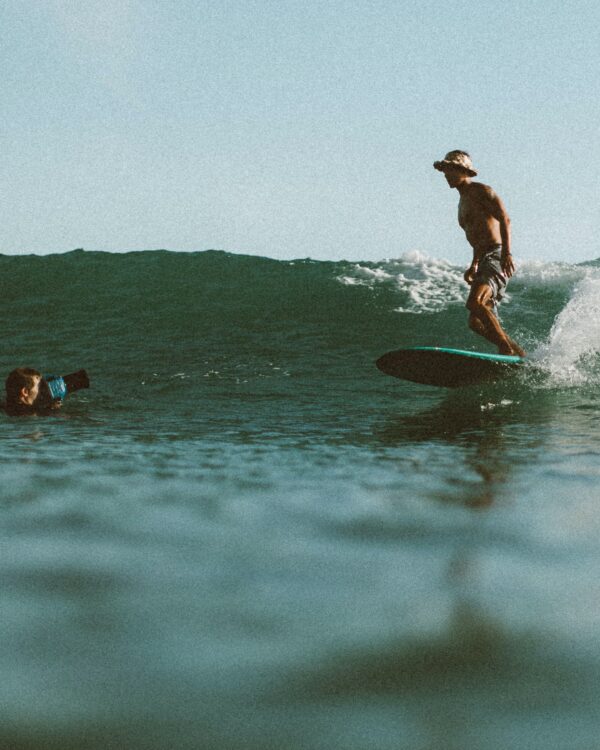

Hamburg, 17.11.2024 – After successfully participating in surf festivals in the north of Germany (Fehmarn) and a trade fair in the south,
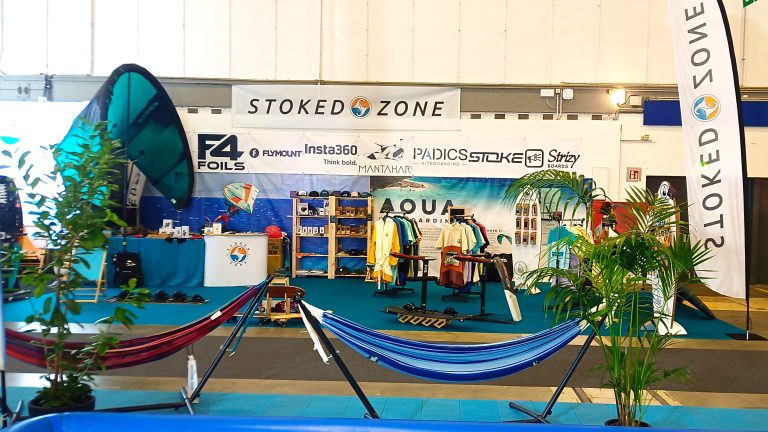
Hamburg, 10.12.2024 – Boot & Fun Berlin was another success for the development of the Stoked Zone as a platform for surf sports
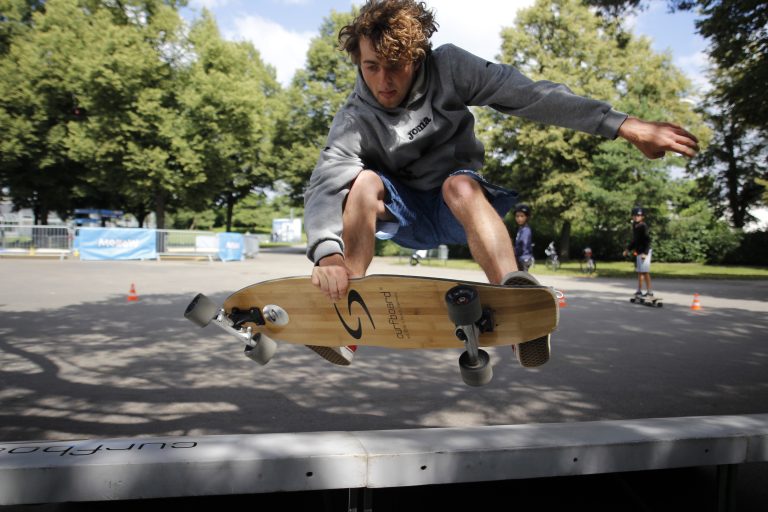
Hamburg 25.11.2024 We are very pleased to announce our partnership with the premium surfskate brand Curfboard.Curfboard is a German company with a